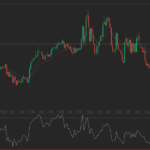 Natural gas fell for a fifth day as forecasting agencies predicted overall seasonal weather across most of the US with no imminent threat of widespread freezes, paving the way for more above-average inventory injections.
Natural gas fell for a fifth day as forecasting agencies predicted overall seasonal weather across most of the US with no imminent threat of widespread freezes, paving the way for more above-average inventory injections.
On the New York Mercantile Exchange, natural gas for delivery in November fell 1.43% by 11:18 GMT to $3.712 per million British thermal units, having earlier touched $3.709, the lowest since November 22nd. The power-station fuel settled 0.8% lower on Friday at $3.766, closing the week 2.4% lower.
Prices continued to edge lower as weather patterns showing mostly moderate weather throughout October, with only localized overnight lows below the freezing point, failed to scare market players into pushing the energy source higher.
According to NatGasWeather.com, reinforcing cool blasts will hit the Great Lakes Region and Northeast early this week and push lows into the 40s and 30s, locally below freezing point, driving moderate heating demand. Todays cold start will be followed by highs reaching into 40s and 50s to the north, and 60s to the south.
The rest of the US will enjoy comfortable conditions and as high pressure expands late this week, it will cover even large parts of the northern US, inducing only light heating and cooling national demand during those days.
The Midwest will see highs ranging between 40s and 50s to the north and 60s south, while warmer conditions with highs in the 70s will be felt across the Plains and middle Mississippi Valley.
The southern US will continue to gradually cool, with the until-recently widespread highs in the 80s and 90s becoming rarer, easing the need for cooling. The interior South will see temperatures peak in the upper 60s and middle 70s on Monday, while the remainder of the region will reach the upper 70s and middle 80s. Widespread dry conditions are expected.
Most of the West will enjoy seasonal, or slightly warmer weather. Rain and showers are expected over eastern Washington and Oregon, Idaho and northern Nevada, as well as southern Colorado and New Mexico, while dry conditions are in effect for the rest of the western US. Northern California, Oregon and Washington will see highs in the 60s, while temperatures over the remainder of the region, except the deserts, will peak at the upper 60s and lower 70s.
Market players looked ahead at possible weather systems with increased chance of lowering temperatures significantly across the North around end-October and early-November, but it is too early to get a clear grasp on them.
“It will take past October 28th before the threat of any truly cold northern Canadian air approaches the northern US,” NatGasWeather.com analysts said in a note to clients. “However, we continue to see signs of colder temperatures potentially arriving near or after the 1st of November, but it’s still not very convincing and could take days before it becomes so.”
Data by the US Commodities Futures Trading Commission dated October 17th showed that speculators decreased their bullish bets on natural gas in the week through October 14th. Net-long positions slid to 2 653 contracts, down from 6 288 in the preceding week.
Supply data
The power-station fuel fell further on Thursday after the Energy Information Administration reported that US natural gas inventories rose by 94 billion cubic feet (bcf) in the seven days through October 10th, exceeding analysts’ projections for a build in the range of 89-92 bcf and the five-year average gain of 78 billion. This was the 26th consecutive above-average weekly build.
Total gas held in US storage stood at 3.299 trillion cubic feet, narrowing the deficit to the five-year average to 9.9%, down from 10.5% a week earlier, and also shrinking the gap to last year’s 3.643 trillion to 9.4%, from 10.1% during the preceding week.
Due to last week’s mostly seasonal and in some regions above-normal temperatures, analysts’ expectations for the build due to be reported on October 23rd ranged between 95 and 98 billion cubic feet, well above the five-year average net injection of 70 billion cubic feet.
Pivot points
According to Binary Tribune’s daily analysis for Monday, November natural gas futures’ central pivot point stands at $3.766. In case the contract penetrates the first resistance level at $3.817 per million British thermal units, it will encounter next resistance at $3.868. If breached, upside movement may attempt to advance to $3.919 per mBtu.
Having already broken its first support level at $3.715 per mBtu, the energy source will next see support at $3.664. If the second key support zone is breached, the power-station fuel’s downward movement may extend to $3.613 per mBtu.
In weekly terms, the central pivot point is at $3.812. The three key resistance levels are as follows: R1 – $3.909, R2 – $4.052, R3 – $4.149. The three key support levels are: S1 – $3.669, S2 – $3.572, S3 – $3.429.





